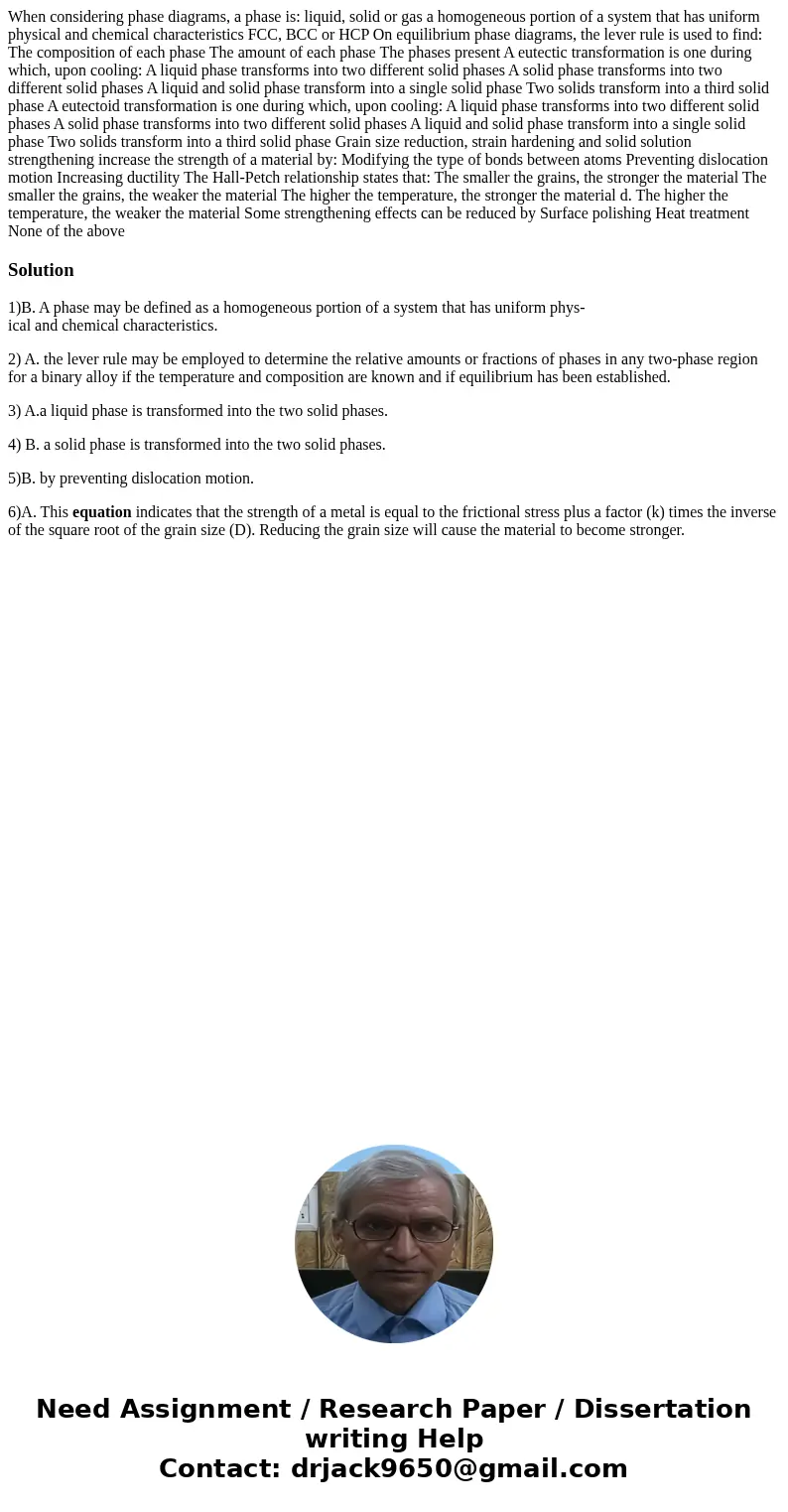When considering phase diagrams a phase is liquid solid or g
When considering phase diagrams, a phase is: liquid, solid or gas a homogeneous portion of a system that has uniform physical and chemical characteristics FCC, BCC or HCP On equilibrium phase diagrams, the lever rule is used to find: The composition of each phase The amount of each phase The phases present A eutectic transformation is one during which, upon cooling: A liquid phase transforms into two different solid phases A solid phase transforms into two different solid phases A liquid and solid phase transform into a single solid phase Two solids transform into a third solid phase A eutectoid transformation is one during which, upon cooling: A liquid phase transforms into two different solid phases A solid phase transforms into two different solid phases A liquid and solid phase transform into a single solid phase Two solids transform into a third solid phase Grain size reduction, strain hardening and solid solution strengthening increase the strength of a material by: Modifying the type of bonds between atoms Preventing dislocation motion Increasing ductility The Hall-Petch relationship states that: The smaller the grains, the stronger the material The smaller the grains, the weaker the material The higher the temperature, the stronger the material d. The higher the temperature, the weaker the material Some strengthening effects can be reduced by Surface polishing Heat treatment None of the above
Solution
1)B. A phase may be defined as a homogeneous portion of a system that has uniform phys-
ical and chemical characteristics.
2) A. the lever rule may be employed to determine the relative amounts or fractions of phases in any two-phase region for a binary alloy if the temperature and composition are known and if equilibrium has been established.
3) A.a liquid phase is transformed into the two solid phases.
4) B. a solid phase is transformed into the two solid phases.
5)B. by preventing dislocation motion.
6)A. This equation indicates that the strength of a metal is equal to the frictional stress plus a factor (k) times the inverse of the square root of the grain size (D). Reducing the grain size will cause the material to become stronger.

 Homework Sourse
Homework Sourse